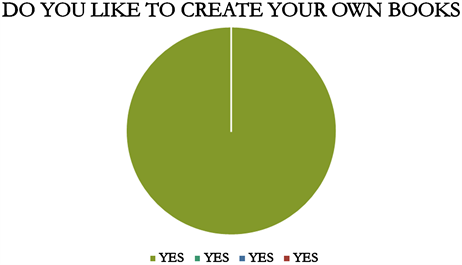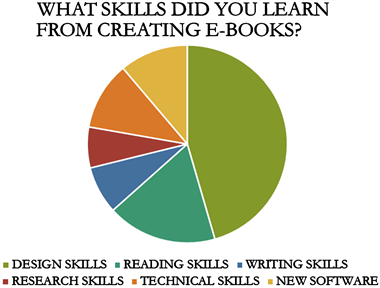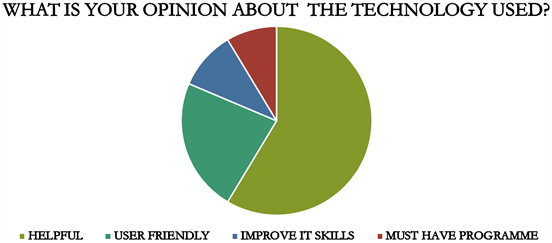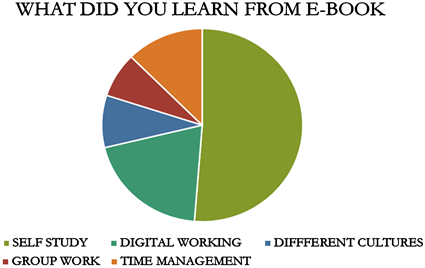Integrating Intercultural Education among Arab Speakers in English Classroom ()
1. Introduction
“Languages are the bedrock of the world’s cultural heritage. Every language offers a rich and unique insight into different ways of thinking and living as well as into the history of the myriad of cultures and peoples across the globe” (British Council, 2013). The relationship between culture and teaching language is important. This is equally applicable to Arab-speaking students whose learning instruction language is English. It is important to see possible relationships between learning a language and cultural practice. This article intends to discuss the way of integrating cultural education in English classrooms for Omani students at Arab Open University based on existing literature and theories on the topic.
Learning a second or foreign language goes above merely developing learners’ language and communication competence in the target language. It includes conveying knowledge about the target culture or the country in which that language is spoken. According to the views of (Englebert, 2004: p. 37), “to teach a foreign language is also to teach a foreign culture”. For an anthropologist, for instance, culture may be defined as people’s way of life. Anthropologists’ definitions of culture have also been echoed by scholars from other fields, including linguists. For instance, (Brown, 2007: p. 380) defined culture concisely as “the ideas, customs, skills, arts, and tools that characterize a given group of people in a given period of period; the relationship between language and culture is a complex one”. This complexity is captured by (Agar, 1994: p. 28) who describes it “Culture is in language and language is loaded with culture”. There is minimal separation between learning a language and assimilation of the cultural values of the society which the language is drawn from. Among earlier studies on this topic, (Brooks, 1964) described language as “the most advanced element of culture”.
Arabic is one of the world’s key languages that is culturally rich. It is spoken by over 300 million people in the Middle East and North Africa, majorly in the countries which form the Arab League (Sayed, 2015). Given the wide background of the Arabic language, the subsequent cultures are equally extensive. Because of globalization and many Arabic-speaking students getting an education from English-speaking countries, their culture and language might be considered for inclusion in their education.
It is imperative to have some practices from the Arabic students’ culture. This could include simple tasks like their teachers giving them the “as-salaamu ‘Alaykum! (Peace be upon you)” greeting and learning to respond to such greeting as is “Wa Alaykum as-salaam! (And may peace be upon you)”. These are probably the two most common phrases in the Arabic language. Inclusion of learners’ culture into language learning will lead to identity construction with a better understanding of their culture in the global scene (Al-Siyabi, 2012). In EFL classrooms, students have limitations in getting acquainted with the target culture and thus less chance to become culturally competent. Speaking English to native speakers is not the aim of foreign language learning, but also to communicate with people coming from different countries and cultures. Thus, learning English is a tool to communicate with multicultural people in the field of education, business, science, technology, art, tourism, and entertainment. Therefore, cultural education in English classrooms will expose students to different cultures and their practices which will develop students’ inter-cultural communication competency (Chlopek, 2008). Cultural awareness for teachers is an inevitable part of the language learning process which helps them to plan culturally oriented pedagogy and a better understanding of each other (Yurtsever & Özel, 2021). Cultural familiarity is important as it not only helps in understanding the context but also hinders the learning process of students specifically in linguistic skills like reading, listening, vocabulary, and speaking (Al Hsani, 2010). Realizing the importance of cultural education in English classrooms, this study attempts to integrate inter-cultural education in English language classrooms among Arab students and to analyze students’ perceptions about the new concept.
2. Review of Literature
Importance of Intercultural Education in English classrooms
(Raddawi, 2015) mentions the importance of intercultural communication among Arabs in the globalized world and having more research into this field. Intercultural communication in academics will help students to deal with people coming from various ethnic backgrounds. Many organizations and governments have given huge support and focus to cultural awareness and the development of cross-cultural teaching methods and systems have followed suit. A quick look at available literature on this subject matter thus indicates that much has been tackled in the recent past.
Tavares and Cavalcanti (1996) narrated in their study dubbed “Developing cultural awareness in EFL classrooms” that aim of teaching culture is to increase learners’ cognizance and subsequently develop their knowledge towards the learning and their home culture. Further, an assertion of (Kaikkonen, 2001: p. 64) is that “the most important goal of foreign language education is to help learners grow out of the shell of their mother tongue and their own culture.” It is noted also that there is a possibility of improved foreign culture when there is good awareness of one’s own culture (Ritlyova, 2009). (Pereira, 2016) pointed in his article that language learning can be easy if students can relate their learning elements in their daily life process and moreover, intercultural learning can enrich their linguistic competence in comparing and contrasting other’s life process. Incorporation of these cultures and languages in class is however a challenge due to scarcity of time, teaching resources, and even lack of knowledge on the cultures involved.
While promotion of Arabic cultures by incorporating them in English learning language is a largely welcome idea, there is a risk of it being considered as promotion of foreign language values. Despite the existence of a plethora of studies on foreign language and cultures’ partial assimilation, not much has been done in the Arabic perspective. This has largely been occasioned by further diversity in the Arabic cultures by region, and the lack of many English-speaking teachers who understand the Arabic language and cultures. The available literature on this topic will be reviewed to find the perception by learners and teachers on culture-influenced teaching methods.
Many students from diverse and Arabic cultural backgrounds, who go to learn in English-speaking countries, or migrate to the same, don’t usually find learning systems that are in tandem with their culture. This has caused many students from the Middle East to perform poorly and face increased challenges and difficulties that draw negatively on their academic achievements. There is the initial struggle they face of struggling to learn the English language and subsequent adoption of new cultures which they understand very little about. Literature to be reviewed on the extent of these struggles is “Iraqi refugee students: from a collection of aliens to a community of learners: the role of cultural factors in the acquisition of literacy by Iraqi refugee students with interrupted formal education” by Nykiel-Herbert (2010). Poor performance by Middle Eastern students is not because they are not clever, but rather because “their home cultures, while being ‘celebrated,’ are not sufficiently utilized as the resource for their own learning” (Nykiel-Herbert, 2010). This weighs in on their learning progress because there is so much to learn, within the same timeframe as their English-speaking peers who are already several steps ahead. If these students are put in classrooms with teachers who know their backgrounds and culture, the cross-cultural interaction process will be more simplified, with improved learning outcomes witnessed (Nykiel-Herbert, 2010).
Literature by (Mao, 2009) to be reviewed has tackled factors that necessitate and directly influence the education of culture in English as Foreign Language classrooms to present a mode of culture teaching in China. According to Mao, it is important to take into account the role of culture in EFL classrooms to gain a better understanding of English as a language and ensure successful cross-cultural communication in real situations. (Fushino, 2011) reveals in his study about students’ perception in using cultural approach in learning English language. Students admitted that the new approach helped them to gain confidence in using English language and to broaden their perception about other cultures. Students, teachers, and parents together emphasized the importance of integrating cultural education into the curriculum which actually gives equality and openness in a multilingual classroom setting (Buchs & Maradan, 2021). Thus, there is a huge need to include “teaching of culture” in the teaching of English. This will achieve teaching of the language through the culture.
Teachers should be culturally aware of the diverse cultures in their classrooms to create a more vibrant learning environment for their students. Teachers with such abilities are more successful when incorporating cultural lessons and approaches, better known as Culturally Relevant Pedagogy (CRP), (Ladson-Billings, 1995) thus making better impacts in the cultural applications. According to Lee (2010), CRP is a combination of educational practices that respond to most students from diverse cultural backgrounds and ought to be incorporated in all learning levels. The use of an effective CRP model will easily bridge the cultural differences, making the affected students more responsive, passionate, and better engaged in the curriculum because it carries their own identities and relatable experiences. Thus, this wedges a successful transformation from background culture to home the school culture, an achievement which is not usually addressed by the traditional instructional approaches (Lee, 2010).
Another literature to be reviewed is work by Ho, S. T. K. (2009) titled “Addressing culture in EFL classrooms: The challenge of shifting from a traditional to an intercultural stance”. In his study, (Ho, 2009) focused on cultural content in tertiary EFL teaching in Vietnam, and the possible impact it has on intercultural language learning on students on the course of EFL. Ho analyzed underlying assumptions on culture embedded in traditional EFL textbook units currently in use at a Vietnamese institution of higher learning. Cultural components in the units were proposed through a set of standards for intercultural language drawn from the literature. The proposals were in effect expected to raise awareness to learners on culture and engage them cognitively, socially, and affectively in culture learning.
In his article “Promoting cultural literacy in the EFL classroom”, Naqeeb (2012) based his study on the empowerment of teachers through the provision of essentials to develop cultural literacy in EFL classrooms. Naqeeb arms the teachers with cultural literacy as well as the American Access Micro-Scholarship Program as a model through which cultural literacy is promoted in the EFL classroom. This researcher concluded the paper with a recommendation to policymakers to adopt the new philosophy when teaching the English Language as a foreign language.
Among the most recent literature to be reviewed is “The attitudes of EFL teachers towards teaching culture and their classroom practices” by Karabinar and Guler (2012). They focused their study on describing the attitudes of teachers of language towards the teaching of culture. They found that variation between native and non-native English-speaking teachers is minimal, and equally difference in attitudes by teachers working at state-owned institutions, and those in private universities is equally minimal. Further, they found out that a higher participation rate in “training courses on teaching culture” and “professional development activities” resulted in a more positive attitude towards integrating culture and language.
Though teachers agree on the importance of culture, they still have doubts regarding the cultural aspects to be considered for teaching, when, and how to teach (Al Hsani, 2010). Thorough literature needs to be investigated for a better understanding of different techniques and ways of integrating cultural education.
3. Ways to Integrate Cultural Education in English Classrooms
Various studies reflect on the approaches and techniques of integrating cultural education in English language classrooms. Previous studies in Oman and other parts of the world show that there is no one consistent approach in integrating cultural educating in language learning process. Some studies used field approach, role play, cultural stories, cultural celebrations while others applied cross comparative way of using cultural education into their classes.
(Tuzlukova & Al Mahrooqi, 2010) mentions different ways of integrating native culture in classrooms like using articles, newspapers, folktales, books related to the country’s culture, and other aspects. In addition, (Al Seyabi, 2010) explains the ways of integrating culture in the English learning process through two case studies. The first case study exposed students to different cultural activities which provided them to use the target language for expressing their culture like a presentation about Omani culture, organizing Omani cultural day, playing traditional Omani games, and conducting interaction programs with children and teachers of other cultures. In the second case study, students were involved in a British-sponsored interaction partnership program namely, ‘connecting classrooms’ which led students to communicate with UK students. Moreover, (Al Hsani, 2010) suggests various methods that can be used in Oman contexts like using souvenirs, photographs, foreign literature and textbooks, role-playing, and critical reflection of other cultures.
Authentic materials, role-play, literature, folktales, movies, ethnographic studies, proverbs, drama, problem-solving, intercultural communication, creating cultural surroundings, watching movies, and encouraging students to do projects on different cultures are the common types used in cultural studies (Purba, 2011).
(Wei, 2013) explains different cultural activities that were conducted as a part of cultural education. Chinese students were encouraged to study the cultures of other minorities and cooperate with the minorities for celebrating their programs and festivals. The author also tried to bring the ethnic and cultural diversities of different communities of china for cultural awareness of their nation itself.
The article by (Zhao, 2010) revolves around fostering the students’ cross-cultural awareness in EFL teaching. Zhao believes that the importance of acquiring foreign culture includes: 1) familiarizing the EFL learner with the everyday circumstances of the English speaking nations, which includes the customs and traditions, lifestyles, general believes on global views, and key holiday among others, 2) to enable EFL learners to understand the relationship between language and the social variables and effects it has on people’s way of speaking and conduct; and 3) nurturing the learner’s ability to empirically evaluate the culture of the target country. He suggests that the writing of textbooks should be approached from the viewpoint of culture to make them more effective too.
Based on the meta-analysis of 50 culture related studies in ESL/EFL context, the authors (Yurtsever & Özel, 2021) classified cultural studies into two categories: 1) Foundation in which studies were mainly done through lesson components, connecting with other cultures, and 2) Acquirements in which studies were mainly done by developing intercultural competence, cognitive competence, and global involvement.
(Abbaspour et al., 2012) describe the four approaches of teaching culture in their article. They are:
1) Intercultural approach: learned through comparison of the target and the learners’ own culture.
2) Multicultural approach: focuses on the ethnic and linguistic diversity of the target culture, but also the learners’ own culture.
3) Trans-cultural approach: learned through comparison of other cultures and the learners’ own culture.
4) Foreign-cultural approach: concept of a single culture and focus on the target culture.
The study also emphasizes certain techniques of cultural education like authentic atmosphere, cultural information, cultural problem solving, literature and humanities, community resource center, and real-life exposure.
A study conducted to analyze the feedback of teachers concluded that teachers believed that culture learning had a big impact in English classes both linguistically and in communicative competence. They used several methods to integrate culture into their classrooms like using a textbook, self-developed materials, providing cultural information, comparing and contrasting cultures, and conducting cultural programs.
Another study implemented cultural learning as a set of goals to be achieved by integrating various activities like cultural awareness, cultural relativity, analyzing social-cultural variables, eliciting stereotypes, and researching other cultures. Technology-based cultural learning is very well explained by (Dema & Moeller, 2012) in their article. Writing blogs can be used as a platform to reflect on the understandings of different cultures. Listening and publishing a podcast about different cultures. Incorporating the virtual world is another way of showcasing different cultures.
Thus based on the existing literature, the researcher decided to integrate cultural education in an intercultural approach with technology.
4. Objectives of the Study
The study intends to integrate cultural education in English classrooms and analyze its effect on the learning process.
1) To analyze the impact of cultural education in the English classroom of Arab speakers.
2) To analyze the perception of students about the new system of learning.
5. Methodology
1) Research Design
A qualitative study approach was designed to assess the effectiveness of integrating intercultural education into language classrooms. The task given to the students was taken to analyze the new approach and students’ perception was also analyzed qualitatively by using an open-ended questionnaire.
2) Sample
The study was conducted with first level English Foundation students at Arab Open University. The class consisted of 24 students coming from different parts of Oman.
3) Procedure
The researcher decided to integrate technology based intercultural approach in her English classroom as it was observed that cultural education with technology is very little. Students like to learn with technology as they get exposed to a new platform for the learning process. The cultural study was decided to be an integral part of their study as students were asked to create e-books similar to their English coursebook. Their coursebook consisted of 10 units of different topics like Education, Daily life, Work and Business, Science and Nature, Culture, Inventions and Discoveries, Arts and Literature, Sports, and Nutrition and Health respectively (Figure 1).
The e-book was given as an e-project to the students as a part of their portfolio task. 24 students of the Foundation course were divided into 4 groups consisting of
![]() The book map of level 1 Foundation English book (Garnet Progressive Skills).
The book map of level 1 Foundation English book (Garnet Progressive Skills).
Figure 1. Content page of English course book.
6 members. Groups were given the choice to select their country and other countries. Thus one group selected Oman and the other 3 groups selected China, Turkey, and India respectively. Students created the units of their e-book according to the completion of their units in their coursebook. 8-week time was taken to complete the e-project. They use their computer lab each week for creating e-books through “Canva” software. A rubric was formed to assess students’ work. The 4 e-books after the submission were projected to the full class for comparing and contrasting their native country with other countries in terms of the concepts learned in their classes.
4) Tools
The study intended to integrate intercultural study into English classes and analyze the perception of students towards cultural education.
a) Students’ e-books were taken to analyze the impact of intercultural education.
b) Collaboration rubric was adopted from “Rubric Resources” created by Dr. Karen Franker (2018) to assess the task done by each group.
c) A small open-ended questionnaire was implemented to get students’ perception about intercultural education.
6. Analysis
Students’ e-books were an eye-opener to a world of customs, tradition, geographical features, literature, and the life process of four different countries. Though the study intended to integrate cultural education into English classes, the main objective was to analyze the impact of cultural education in English classes. Through the e-book project, students could apply the learned concept, vocabulary, form, and structure in a different context. They could contextualize the learned material which enhanced their understanding of the concept and the knowledge of application level. Apart from linguistic skills, they also developed study skills like researching about the topics based on different countries, note-taking, paraphrasing, summarizing, editing, and presenting it colorfully with beautiful background pictures. Students also acquired time management skills as they had to submit each unit of their e-book on the due date which made them utilize time effectively for their project. They did the task collaboratively and cooperatively to share their knowledge and ideas with their group members. Thus the study enhanced their social skills. The students constructed an e-book of their own which enhanced their constructive thinking skills. Moreover, they learned a new technology “Canva”, and the way to utilize the software with its options and facilities. Regarding cultural competence, students could relate their culture with others specifically in the field of education, food, clothing, social systems, and literature. They could compare and contrast their culture with others and realize the relevance of their culture in light of others.
A small questionnaire consisting of five questions was implemented to get students’ opinions of their e-book project (Figure 2).
![]() A completed questionnaire in Arabic.
A completed questionnaire in Arabic.
Figure 2. Questionnaire given to the students.
The result is graphically explained below.
1) The pie chart shows that all students agreed the relevance of the task in their academic program

2) The diagram explains the skills acquired by the students. Students acquired different skills, mainly technical followed by linguistic and research skills respectively. Thus the task let them to get acquainted with study skills which are required for their continuous education.

3) The chart shows students’ perception about the technology they used. Students highly preferred the “Canva” graphic website that was used for designing their e-books. The website was easy to use and was helpful in improving their technical skills and highly recommended to have the program in their future learning process.

4) The chart explains that the main benefits they got from this approach were self-autonomy, digital learning, and cultural awareness in language learning process. The students got trained to work cooperatively in a very systematic way.

5) The chart shows the positive response of the students in having a project and prefers to have the same approach in their future classes.

7. Conclusion
Technology-based cultural education in English classes was different from the conventional form of methods. Very little research has been conducted with technology based culture learning in English classes, because they were primarily based on grammar and translation methods for decades. The conventional system of teaching and learning process got changed with the advent of technology that paved the way to the world of actual usage of language in a different context. Technology leads to collaborative learning with authentic materials (Moore, 1999). This study also tried to come out from the conventional method and tried technology for optimum utilization of the available resources and methods. The study indirectly used all the authentic materials for collecting the details of each country, the course book, pictures of different cultures, literature of different cultures, and new software to present it technically in a new format. Thus, the study paved a new way of integrating cultural education in English classes. It also created a platform for students to reflect about their culture in the background of different contexts. Tutors need to be proactive in planning and implementing culture-related activities in a way that suits the needs of the students. In a 21st century classroom, the students need to be adept in technical accuracy and proficient in language usage in different situations. Thus culturally relevant pedagogy should be introduced and implemented in English classes as the main objective of English is to communicate with people from different parts of the world.
Appendix
Students’ e-books links
https://drive.google.com/file/d/1uDI0TAaDH6oFwIvZEh5isfUXlSmHHdAG/view?usp=sharing
https://drive.google.com/file/d/1XL6Uv3ct0yg3ha9_7YtulBUBTjGXZg6r/view?usp=sharing
https://drive.google.com/file/d/0B3rk3oEO7SThWTY3V1hLbm5PUUFmT2RMUmNudDFmRmlDazlR/view?usp=sharing&resourcekey=0-rBEjxMyZ4CW8wH4FBemhEw
https://drive.google.com/file/d/0B3rk3oEO7SThT3NwanJRTHdwSVpUOEhMc3hEMXF2cVJrbVdV/view?usp=sharing&resourcekey=0-eTzM982q6tn8jgl43iy6BA
COPYRIGHT 2007-2016 Dr. Karen Franker (2018): retrieved from https://www2.uwstout.edu/content/profdev/rubrics/secondaryteamworkrubric.htm.